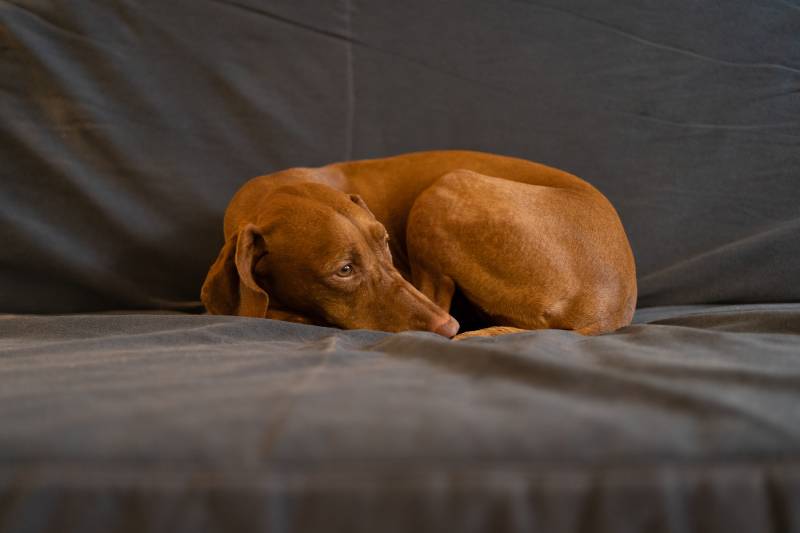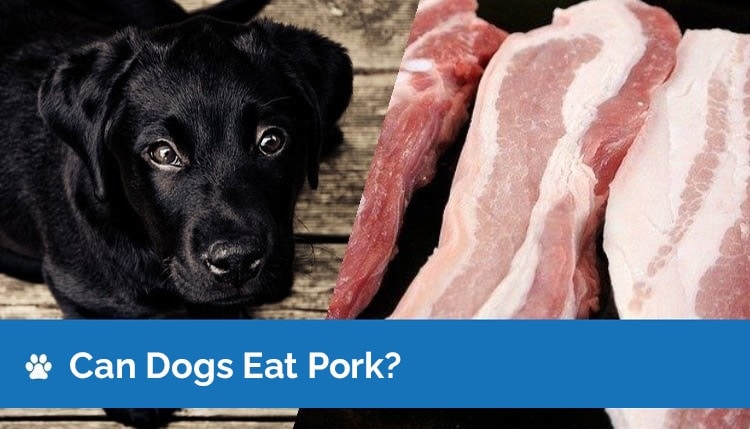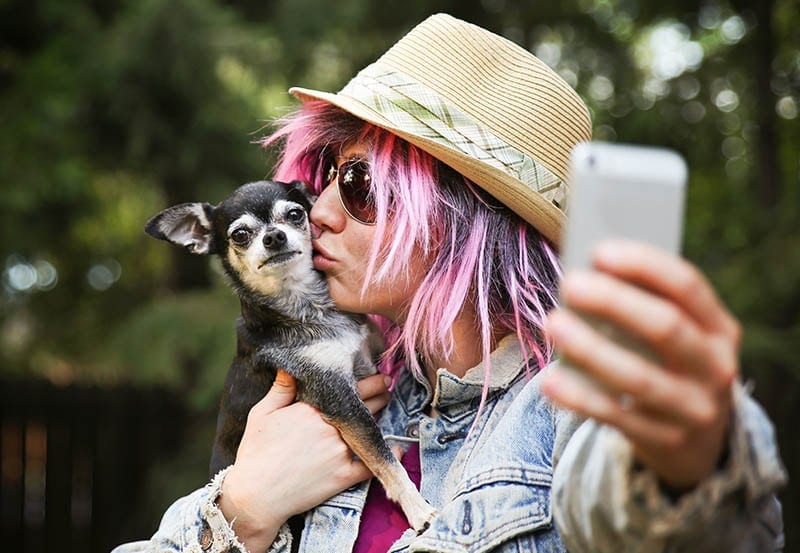Kuvasz vs. Great Pyrenees: The Differences (With Pictures)

Updated on
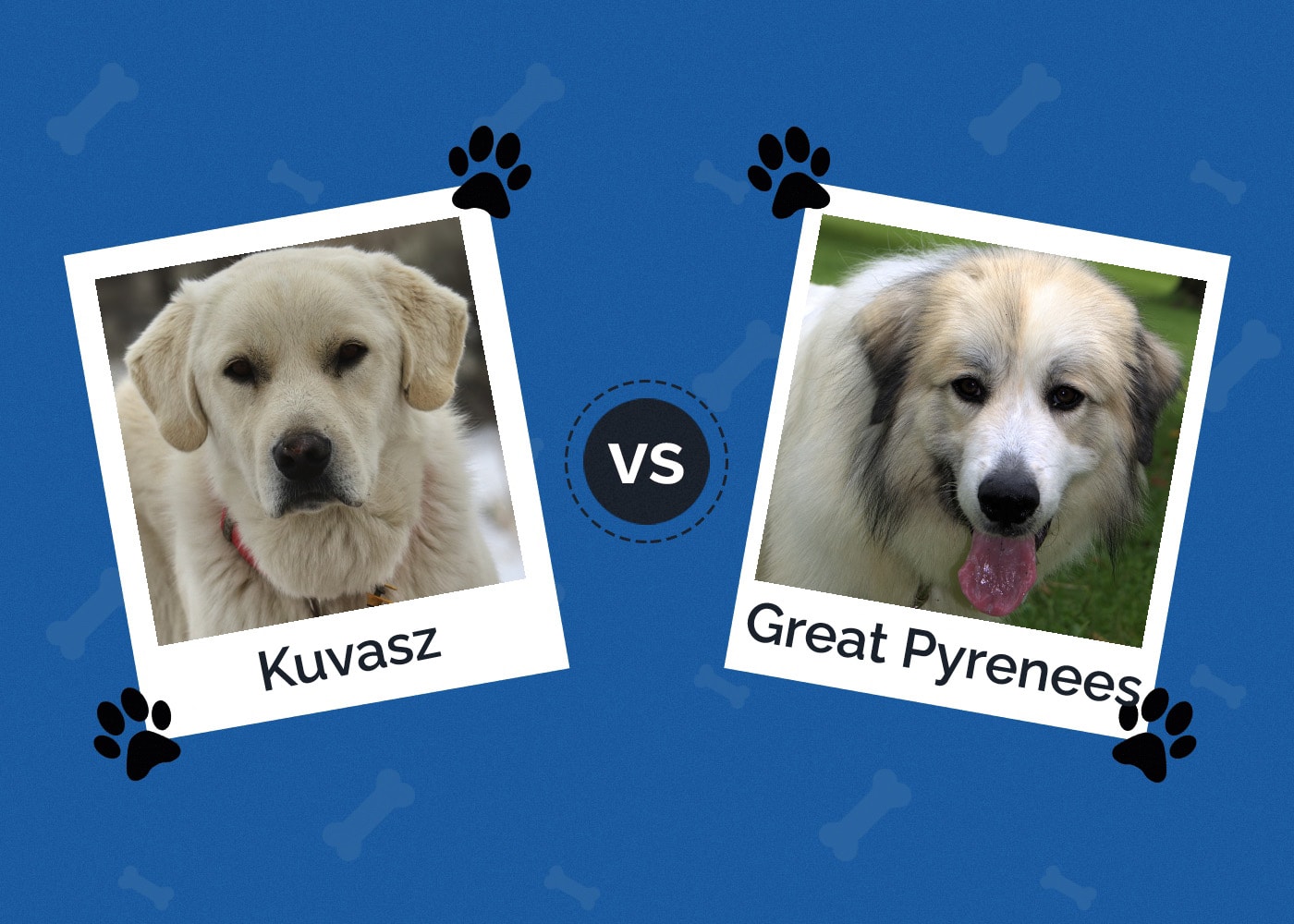
Click to Skip Ahead
The Kuvasz and Great Pyrenees are very similar dog breeds. They were both originally bred as guardian dogs to protect livestock and are both giant breeds. They also both come in white, although while the Kuvasz is predominantly a white breed, the Great Pyrenees can come in other colors.
But while the Great Pyrenees comes from the Pyrenees Mountains in France and Spain, the Kuvasz is a livestock guardian from Hungary. Both breeds can make good family pets, but they do need plenty of socialization and obedience training from a young age. Unless you see them side-by-side, you are unlikely to notice that the Great Pyrenees usually grow a couple of inches taller and weigh 30 pounds or so more than the Kuvasz.
Below, we look at both breeds and consider the similarities as well as some of the differences, so you can choose which is the better breed for your family.
Visual Differences
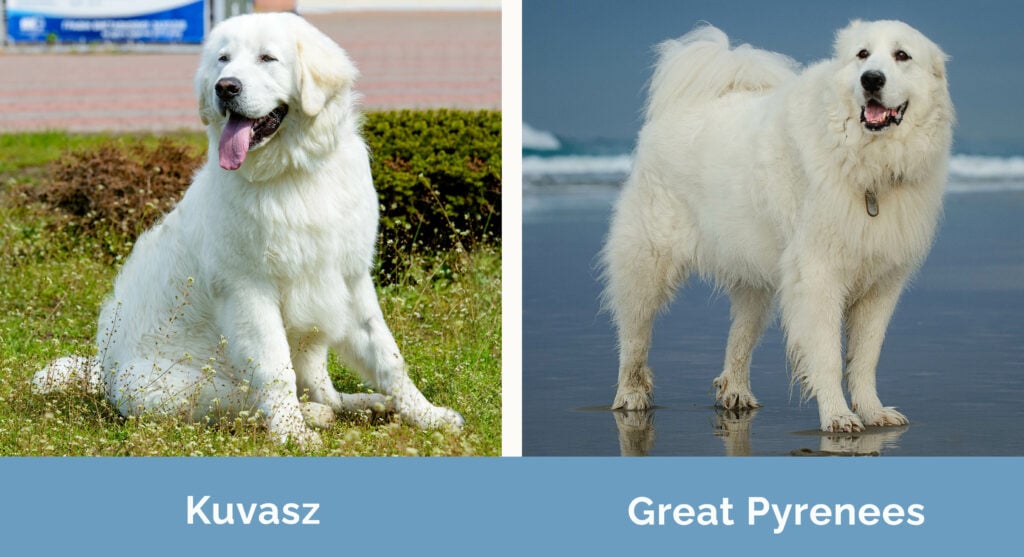
At a Glance
- Average height (adult): 26–30 inches
- Average weight (adult): 80–120 pounds
- Lifespan: 10–12 years
- Exercise: 90 minutes a day
- Grooming needs: Moderate/heavy
- Family-friendly: Yes
- Other pet-friendly: Usually
- Trainability: Intelligent, trainable, but can be difficult
- Average height (adult): 26–32 inches
- Average weight (adult): 90–150 pounds
- Lifespan: 10–12 years
- Exercise: 60 minutes a day
- Grooming needs: Moderate/heavy
- Family-friendly: Yes
- Other pet-friendly: Usually
- Trainability: Intelligent, trainable
Kuvasz Overview
The Kuvasz is a Hungarian livestock guardian that was first bred over a thousand years ago. They were used primarily as guardians on farms and were used to taking on wolves and other fierce predators. In the 15th Century, the Kuvasz became the preferred breed of Matthias Corvinus, the King of Hungary, who slept with a pack of them in his bed chambers.
By the end of World War II, the breed had nearly died out, with fewer than 30 left. Fortunately, the Kuv was saved from extinction by fans of the breed, and it remains popular in Hungary today. It is rare to see the Kuvasz outside Hungary, although it is not completely impossible to find.

Personality
The Kuvasz was bred to protect livestock and work with farmers. As well as protecting against wild animals they would also hunt wolves and other animals. But they had to be calm and placid with their human families, too.
They retain many of these characteristics today, being good with family but potentially wary of strangers and anything they view as being a potential threat to family and property. They can also be a little stubborn, which adds an extra layer of difficulty to training and life with the Kuvasz.
Training
The stubbornness of the breed can make the Kuvasz a challenge to train. They need regular exercise and mental stimulation, and this is one breed that really benefits from being given a task to perform and a job to do. Its guarding nature means that owners need to socialize the breed, even more than is true of any other breed.
Get your Kuvasz used to meeting new people and different animals. Sign up for puppy training classes—not only can you learn the basics of training, but puppy classes give you the chance to socialize your young dog with others.

Grooming
With its thick double coat, the Kuvasz does pose something of a grooming challenge. It will shed heavily twice a year and it is a good idea to have a good deshedding tool and to brush several times a week to help prevent matting and to somewhat control the amount of hair that is shed.
Check in the ears when you brush, brush teeth three times a week, and trim nails when they get long or when you hear them catching on hard floors.
Health & Care
The size of the breed means it is not usually well suited to life in an apartment. Although it isn’t the kind of dog to charge around endlessly, it does need time outside to blow off steam and burn off energy.

Suitable For:
Owners that have experience training and socializing stubborn breeds and that have ample space to exercise a giant breed like the Kuvasz.
- Effective as a working dog breed
- Good with family
- Doesn’t require huge amounts of daily exercise
- Can be stubborn and a little difficult to train
- Too large for apartment living
Great Pyrenees Overview
The Great Pyrenees is arguably better known, globally, than the Kuvasz. It comes from the Pyrenees Mountains which are on the border of France and Spain. The breed was raised to protect livestock and to assist farmers with the rest of their work. They needed to get on well with their handler but protect against potential threats. It is believed that predecessors to the Great Pyrenees arrived in the region in about 3,000 B.C. and that local breeders used them to create what we now know as the Great Pyrenees.

Personality
As a guardian breed, the Great Pyrenees is good with family, typically forming a very strong bond with its owners. But it can be wary of strangers and does require socialization and training from a young age. The Great Pyrenees does have a reputation for being a little stubborn but is also considered highly trainable.
Training
Keen to please its handler, the Great Pyrenees is relatively easy to train. Be firm but fair, offer praise for positive behavior, and embark on socialization and training from as young an age as possible. Again, puppy classes are a good idea as they will help both of you get to grips with early training requirements.
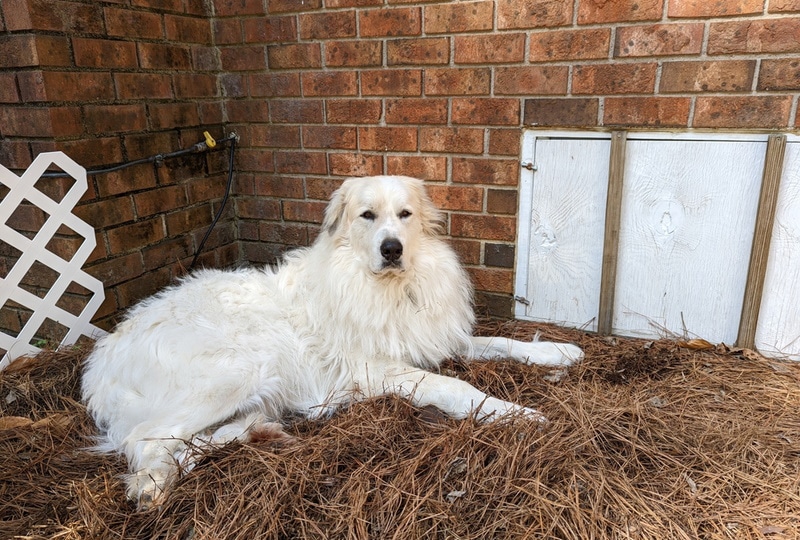
Grooming
The double coat of the Great Pyrenees sheds twice a year. Brush at least three times a week, and ideally every day during molting season. This will help control the amount of hair that is shed around the house and can make cleanup easier. It also leaves your Pyrenees feeling more comfortable and relaxed and prevents knotted hair. Check inside the ears regularly, and brush their teeth three times a week. Clip nails when they get long, which will usually be every 2–3 months.
Health & Care
Regular exercise is important. Expect to provide an hour a day of walks for your Pyrenees. Don’t provide too much more than this, and don’t encourage your Great Pyrenees to take part in exercise that is too strenuous because it can put too much pressure on the large joints that have to carry a lot of weight.
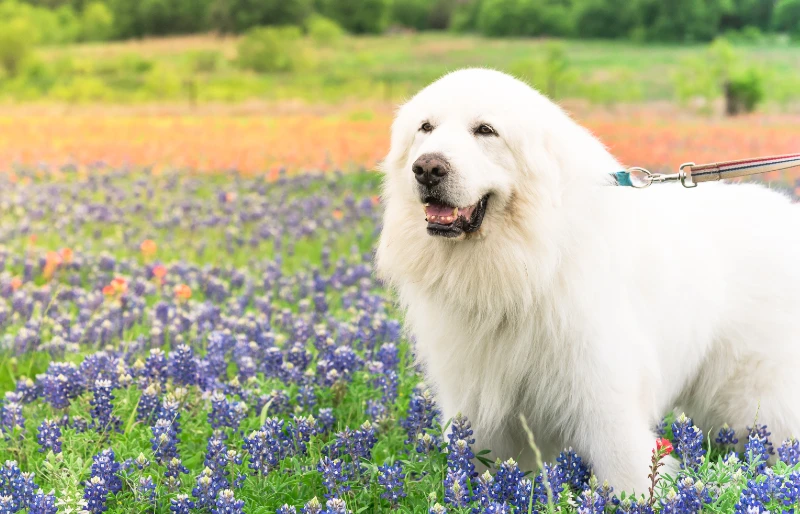
Suitable For:
Owners looking for a loyal, loving dog that has moderate but not excessive exercise requirements and that is considered relatively easy to train.
- Considered easy to train
- Only has moderate exercise requirements
- Loving and loyal with family
- Needs early socialization to prevent over-protectiveness
- Too big for apartment dwellers
Guardian Dogs
Both the Kuvasz and the Great Pyrenees were bred as guardian dogs and were used to protect livestock from predators. They would have had to fight wild animals including wolves and would potentially have had to tend off human would-be thieves as well. This guarding instinct has remained with both breeds and while they can make excellent family pets that are loving and loyal with family, they do need early socialization and ongoing training to ensure they are well-adapted and not too cautious and defensive around strangers.
Training
To help overcome their defensiveness and to prevent these breeds from potentially reacting to visitors and strangers, owners need to provide socialization for their dogs when they are young. This means introducing them to new and different situations so they get used to different people and different animals and also so they can take any new situation in their stride without believing everything to be a threat.
The size of the breeds means owners also benefit from teaching good manners. This means stopping the dogs from jumping up when greeting people and also teaching basic commands like sit and stay.
Which Breed Is Right for You?
The Kuvasz and Great Pyrenees are guarding dog breeds that were once used to protect livestock and farmers from predators and attackers. The breeds do retain some of their guarding instincts, but they can make excellent family pets that are loving and loyal. Neither breed is considered suitable for apartment living because they are too large, but both really only have a moderate exercise requirement and do benefit from time outdoors.
Featured Image Credit: (L) vagabond54, Shutterstock | (R) Susie Prentice, Shutterstock




